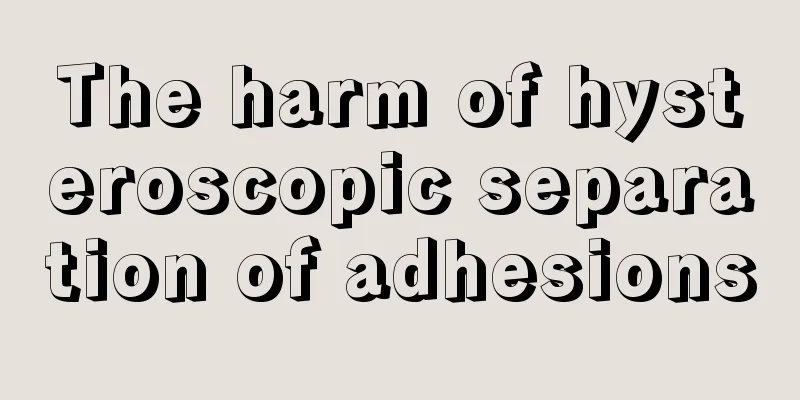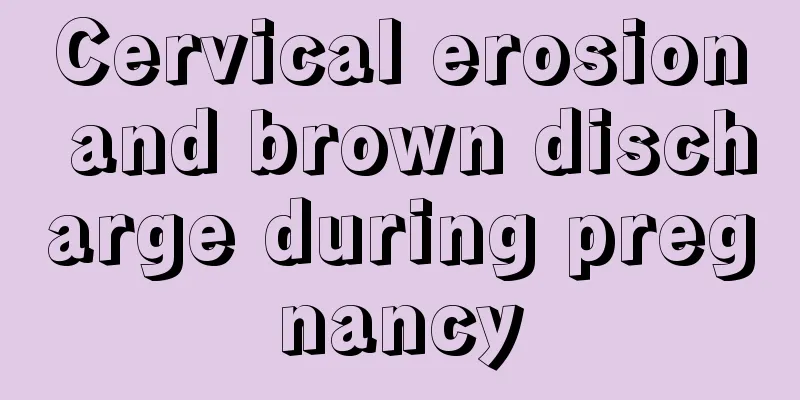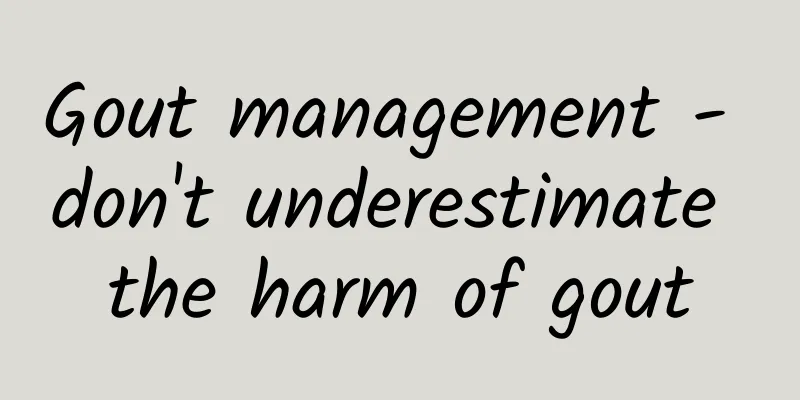The harm of hysteroscopic separation of adhesions

|
It may be because abortion surgery is currently performed within the uterine cavity, and intrauterine surgery is performed more frequently, resulting in many cases of intrauterine adhesions. This is quite painful for female friends, and may even affect future fertility. Hysteroscopy is currently a relatively advanced inspection and treatment technology. It has a relatively fast recovery after surgery and less trauma. It can be used to treat intrauterine adhesions. Many friends are worried that surgery will cause certain harm. So what are the hazards of hysteroscopic separation of adhesions? The following is a detailed introduction. Intrauterine adhesions are currently recognized as a highly difficult and complicated disease. Even with surgical separation, the chance of re-adhesion is extremely high. Hysteroscopic surgery is a minimally invasive surgery that causes some damage to the uterus. Risks of hysteroscopy. Hysteroscopy is a new, minimally invasive gynecological diagnostic and treatment technology. It is a fiber-light endoscope used for intrauterine examination and treatment. If it is not performed properly, complications such as perforation, bleeding, and infection may occur. Complications of hysteroscopy: 1. Injury (1) Excessive traction and dilation of the cervix may cause cervical injury or bleeding. (2) Uterine perforation: The uterine perforation rate of diagnostic hysteroscopic surgery is about 4%. The American Society of Gynecologic Laparoscopists recently reported that the uterine perforation rate of surgical hysteroscopy is 13.0%. Severe intrauterine adhesions, scarred uterus, excessive anteversion or retroflexion of the uterus, after cervical surgery, atrophic uterus, and lactating uterus are all prone to uterine perforation. Sometimes the perforation is not detected and the surgical procedure continues, which may cause serious intestinal damage. Perforation often occurs at the fundus of the uterus. Laparoscopic monitoring can also reduce the incidence of perforation. Once perforation occurs, the operation should be stopped, the instrument should be withdrawn, the perforation situation should be estimated, and abdominal pain and vaginal bleeding should be carefully observed. Perforation of a 5 mm scope has no obvious sequelae, but perforation during hysteroscopic surgery requires consideration of laparotomy or laparoscopy. Especially caution should be exercised when perforating due to electrocoagulation devices and lasers used in recent years. Fallopian tube catheterization under hysteroscopy may damage the uterine horns, carbon dioxide gas distension of the uterus may cause hydrosalpinx rupture, and gas may enter the broad ligament to form emphysema. |
<<: Polycystic pregnancy is prone to fetal arrest
>>: Post-hysteroscopy exercise to prevent re-adhesion
Recommend
What does a big nose mean for a woman?
In ancient physiognomy, the nose represents a per...
What to eat when you are pregnant to give birth to a boy
Under normal fertilization conditions, there is n...
Three months of milk supply suddenly decreased
We all know that when a mother enters the breastf...
35 days of pregnancy, back pain is severe
During pregnancy, some pregnant women will have s...
How to relieve pain of oral ulcers in pregnant women
Oral disease has always been a daily disease that...
How can exercise shrink the vagina?
Many women will have more or less vaginal relaxat...
What is the reason for women to urinate blood?
Urination is one of our most normal physiological...
What is the reason for the stringy discharge during menstruation?
When you have your period, you can judge whether ...
Can different vaccines be administered at the same time?
A parent complained to the doctor, "My child...
Can pregnant women use special cold medicines in the early stages of pregnancy?
Women must pay attention to diet and medication d...
How many days after cesarean section should the gauze be removed?
More and more women choose to have a cesarean sec...
Which is less healthy, grilled or fried chicken? How to eat fried chicken legs healthier
In our daily diet, eating too much fried food is ...
It’s allergy season again. Fight the respiratory defense battle
The spring breeze brings warmth and flowers bloom...
Why is my period suddenly heavy?
The normal menstrual cycle and menstrual volume f...









